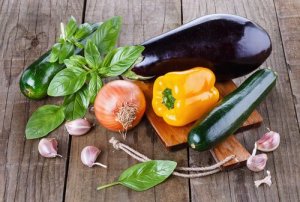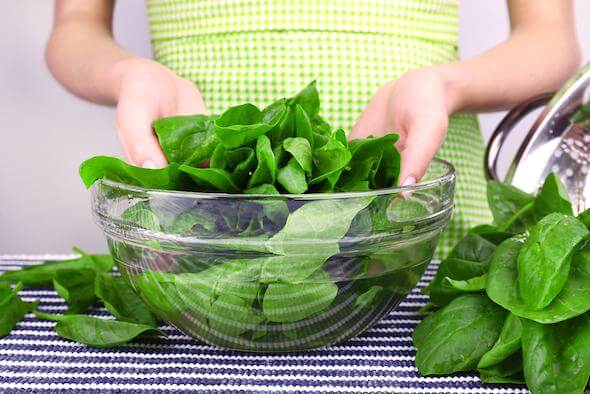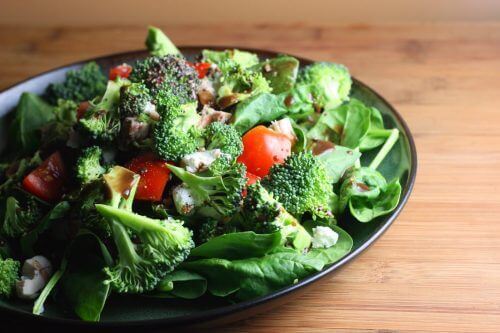Alkaline Foods and Your Body


Reviewed and approved by the pedagogue in physical education and nutritionist Elisa Morales Lupayante
You’ve probably heard about the benefits of an alkaline diet. Naturists, doctors and researchers highlight the importance of consuming alkaline foods to balance the pH of the body. After all, an acidic pH is the ideal environment for many diseases.
Before discussing alkaline foods and the benefits of consuming them, first we’ll go over some points to understand the importance of an alkaline diet.
According to the dictionary of the National Cancer Institute of the United States (NCI), alkalization is the process by which high concentrations of acid in the blood are reduced, or the urine, which can cause certain illnesses or conditions.
Let’s take a look at some information about this.
What is the body’s pH?

- Seven is neutral.
- Everything that measures less than 7 is acidic.
- Then, everything that measures more than 7 is alkaline.
In the human body, the pH level varies in each organ. Meanwhile, in the intestines, skin and vagina, the balance is more acidic because this is how bacteria are eliminated. In saliva, the balance is more alkaline.
In addition, vital processes like breathing, metabolism and exercise generate acids that help our body “fight” to achieve the right balance.
The work our body does to achieve a balanced pH is a complex process. However, we can help through the foods we eat on a daily basis.
What are alkaline foods?
Many foods are highly acidic: meats, dairy products, white sugar, refined flours, industrialized foods.
On the other hand, alkaline foods are those that help alkalize the body’s balance.
An increase in acidity inflames your tissues and makes them the ideal ground for diseases.
However, an alkaline diet provides the necessary minerals to balance the acidified pH.
The main characteristics of alkaline foods are:
- High proportions of potassium and lower amounts of protein.
- Metabolic byproducts. Typically, your body makes these from the intake of these foods. Basically, they contain the proportion of hydrogen ions needed to reduce the amount of acid in the body.
What is an alkaline diet made up of?

The 7 most important alkaline foods

- Spinach
- Savoy cabbage
- Cucumber
- Broccoli.
- Avocado
- Celery.
- Peppers
What are the benefits of an alkaline diet?

First of all, an alkaline diet can reverse type 2 diabetes. As we know, this type of diabetes is closely related to our diet and lifestyle.
With all diets, it’s important that there’s variety.
Therefore. we recommend that you vary your alkaline foods.
If you need to follow a diet rich in anti-inflammatory agents, the solution is to eatalkaline foods. Chronic inflammation is very common in cardiovascular and neuro-degenerative diseases.
It should be noted that the body’s response to inflammation is a super-active immune system that gradually damages the organs.
5 habits to alkalize our body
- First, start the day with two glasses of warm water and a quarter cup of lemon juice. Lemon juice is a powerful alkaline.
- Avoid white sugar. This is the main inflammatory agent for many organs of the body.
- Eat more raw vegetables and green juices. Carcinogenics hate the oxygen that comes from green vegetables.
- Do exercise. There’s nothing like a good daily routine to relieve stress and generate acid hormones such as cortisol and adrenaline.
- Avoid chemicals, such as sweeteners and unnecessary medications.
- Always consult your doctor if you have any questions.
All cited sources were thoroughly reviewed by our team to ensure their quality, reliability, currency, and validity. The bibliography of this article was considered reliable and of academic or scientific accuracy.
-
Dawson-Hughes, B., Harris, S. S., & Ceglia, L. (2008). Alkaline diets favor lean tissue mass in older adults–. The American journal of clinical nutrition, 87(3), 662-665.
-
Gould, J. M., Jasberg, B. K., Dexter, L. B., Hsu, J. T., Lewis, S. M., & Fahey, G. C. (1989). High-fiber, noncaloric flour substitute for baked foods. Properties of alkaline peroxide-treated lignocellulose. Cereal Chemistry, 66(3), 201-205.
-
Wang, J., & Fung, D. Y. (1996). Alkaline-fermented foods: a review with emphasis on pidan fermentation. Critical Reviews in Microbiology, 22(2), 101-138.
This text is provided for informational purposes only and does not replace consultation with a professional. If in doubt, consult your specialist.








